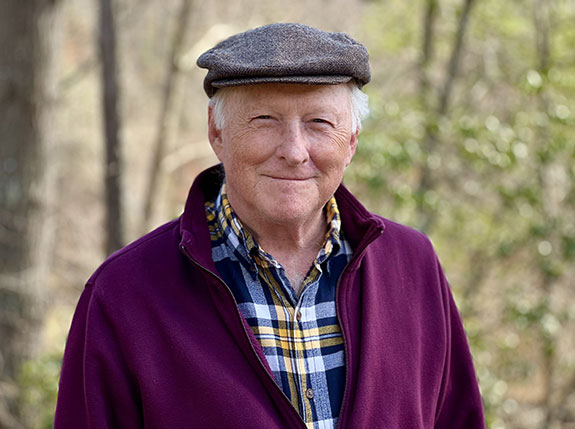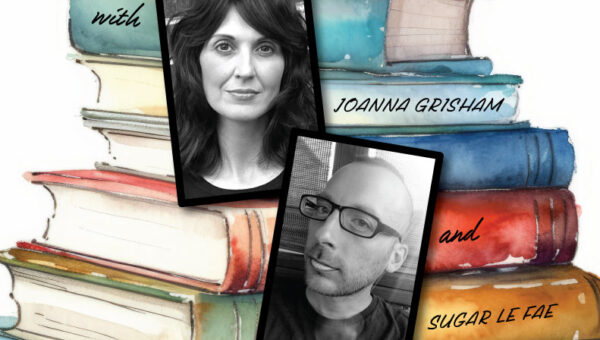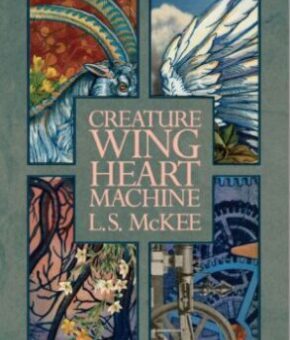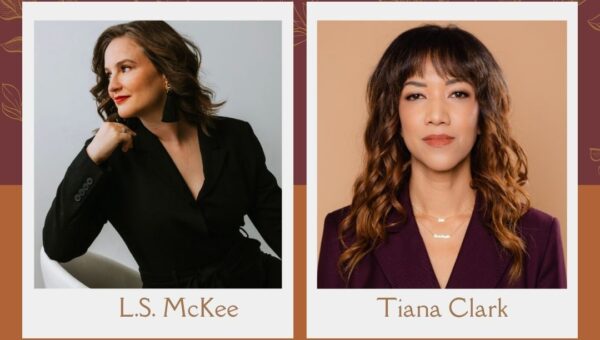Amy Wright: I’d like to talk about the relationship between “the invincible army of losers in the service of love” and the “fragile confederacy of kind, benevolent, and creative people that is necessary for civilized life,” as you claim in The Beloved Republic. That is, what assures you the losers are invincible, and the vulnerable cooperative?
Steve Harvey: I’ve thought a lot about this question since I read E. M. Forster’s definition of the phrase “the beloved republic” in his essay “What I Believe” in Two Cheers for Democracy. He makes clear that it is not based on power, rank, or influence. It is, rather, “an aristocracy of the sensitive, the considerate, and the plucky.” Later in the essay he amplifies the idea in a wonderful sentence. These people, he writes, “are sensitive for others as well as for themselves, they are considerate without being fussy, their pluck is not swankiness but the power to endure, and they can take a joke.” They are the keepers of civilization.
When their world is at peace, civilization flourishes, Forster argues, its citizens creating art, music, and literature, doing sciences, and starting religions but during times of oppression and war their beautiful creations are vulnerable to destruction. He was thinking about Nazi Germany which was on the rise as he was writing and had already begun rounding up Jews and burning books. One of my examples was the Albigensian crusade when the Catholic church turned against the troubadour princes in Europe ending a literary culture based on love and ushering in the inquisition.
Collaborations in the service of creativity are temporary and often break down on their own due to artistic or personal differences, but they are also destroyed from without. Those who live for creation rather than destruction inevitably lose because a song is little protection against starvation, flaming arrows, drone missiles, and mass deportation forces. “When we hear the knock on the door,” I write in The Beloved Republic, “the singing stops.” But the song does not, and even though we no longer write troubadour lyrics, the spirit of troubadour love poems gave us Dante’s Beatrice, Petrarch’s Laura, and Romeo and Juliet, not to mention an enormous oeuvre of Motown songs. In this sense the “army of losers” is invincible.
AW: Do you think of The Beloved Republic as an invitation to readers to this persevering community?
SH: I hope so, but only one of many. Let me linger on your word invitation because I believe entreaties to join the beloved republic are on display everywhere. Take Madre Luz for instance, in the essay named after her in my book. She is a large, paper-mâché installation of a half-naked and pregnant black woman carrying a child on her back that Pablo Machioli built and placed in front of the Lee-Jackson confederate statues in Baltimore. At first he had her facing the street as if beckoning Americans to the peaceful protest of racism, in short, an invitation to the beloved republic. Later he turned the statue toward the generals on horseback–facing the enemy–but still she was an invitation for us all to become our better selves.
At the base of the statue someone had scrawled “Remember C-ville” in magic marker. While this statue stood for peace, a very different invitation was being delivered in Charlottesville, Virginia, where neo-Nazis carried torches across the UVA campus at night and the next day one of them mowed down non-violent, anti-Nazi protestors with a car, killing Heather Heyer. The contrast could not be starker. I think some could quibble with Forster’s term–I mean, how can we call the inevitable back-biting and feuding among artists ‘beloved’–but to me, the term is more visceral than abstract. You know the beloved republic when you feel it, and the Nazis in Charlottesville were obviously not into love. You felt their hatred in your gut.
In the end, vandals knocked down and destroyed the statue to Madre Luz. All of the creations of the beloved republic are subject to destruction. Creativity is the fragile tip of the best in humanity. But when Heather Heyer’s mother, Susan Bro, stood defiantly at her daughter’s funeral and announced, magnificent in her grief, that white nationalists “tried to kill my child to shut her up but guess what, you just magnified her,” she reminded us all of the invincibility of the republic of love. The beloved republic is everywhere. Go to any museum, pick up a guitar, lift my book from the shelf, open Zone 3 and you’re invited.
AW: Ah, indeed, and don’t we need encouragement from these congregations? In your essay “One Boy’s Luminous Skin,” you express wonder at the buttery, sun-sculpted “dermis webbed with nerves for pain” of a boy, aged six, who has been shot. The essay ends with the allegation that this nameless universal child’s blood is “on us all.” How have you turned to your creative process in times of grief or anger to begin healing?
SH: With a few exceptions, I don’t get emotional while I am writing. I concentrate on getting it right, finding the exact language for the experience I am trying to convey. When I wrote “One Boy’s Luminous Skin” I remember reading about skin and emergency room surgical procedures to find the language I needed. I poked through the dictionary, looked online for interviews with ER surgeons, studied diagrams about layers of skin, and learned about what a bullet does to skin just to get a few short paragraphs. I see it as work. I’m too busy with words and sentences and white space and myriad other writing tasks to have time for emotion. In that sense, writing seems almost heartless, but I think I have to have that kind of detachment to get the experience into ink.
But there is a great serenity that comes from this process that helps especially during times of grief or anger and it leads to healing. I like what Virginia Woolf says on this subject in Moments of Being. Whether she is remembering a flower rooted in a circle of dirt or describing sexual abuse by her half-brother when she was a girl, the act of recreating a memory in words and “discovering what belongs to what,” she explains, “is the strongest pleasure known to me.” For her, making these connections uncovers “the hidden pattern” in everyday experience and reveals “that the whole world is a work of art; that we are parts of the work of art.”
When I wrote about the suicide of my mother in the essay “The Book of Knowledge” that later became a memoir I got very close to her, mixing my words with the words in her letters. In one scene I watched the film of Peter Pan that we had watched together when I was a boy and when Mary Martin sang “Distant Melody” I got emotional–it was one of those exceptions–and touched the screen in sadness. Well, after fixing myself a cup of coffee I came back and without emotion wrote what had just occurred focusing on “what belongs to what.” What had been sadness turned to “the strongest pleasure known to me.” I know that I cannot bring my mother back with words like some conjurer, and that is a sadness I can do nothing about, but I can with the right words deepen my understanding of our lives, see the “hidden patterns” there, and find solace.
AW: Many people, including other writers, might assume the opposite–that strong emotion generates strong writing. Will you talk more about the disconnection or emotional distance that helps you access the “hidden patterns” and the words for them?
SH: Oh, I agree that “strong emotion generates strong writing,” but not during the writing process itself. I think William Wordsworth had it right when he defined poetry as “emotion recollected in tranquility.” Sometimes tranquility is a long time coming.
I waited fifty years to write about my mother because discussion of her death was discouraged in my family. In many ways, though, the wait was good, It forced me to reckon with the few memories of my mother that remained: hiding under a stairwell on the day she died while looking at the nail points in the risers overhead, hearing my mother and dad fight, watching my tipsy mother sway while standing at a record console and singing “Fever.” These and a few other memories hung like snapshots pinned to a black velvet backdrop in my mind–disconnected, free-floating–but in all those years they remained, so I knew they mattered.
They prompted a deep emotional response, but what I needed was to find other mnemonics: my mother’s letters, movies, and TV shows that I could call up on my computer screen, a drawing of her by my dad, several hundred photographs, the Books of Knowledge volumes that she and I used to read together, and more. Above all, I needed the discernment to understand what these meant. I worked with the detachment of a detective to piece all of this together and see the “hidden pattern”: how those disconnected memories were part of a larger whole.
So it begins with emotion. But it also included strong emotions along the way, usually when I pushed away from the writing desk frustrated and unable to go on. The good news is that It also ends with emotion which Wordsworth left out of his definition–and that is part of the payoff for the writer. Near the end of the essay, I included this paragraph about what I discovered and felt.
After my mother died, I forgot the sensation of her touch and the sound of her voice. I could not hug a shadow. I could not fill her silence with my words. Who is suicide? She was suicide. She became her death…I needed a voice speaking in her present, not one whispering to posterity, a voice animated by the desire to capture the present for someone alive. That is the voice I heard in the letters. When I read them, I got to know her—for the first time, really—know her and miss her. Miss her, not some made-up idea of her. The pain, which had been nothing more than a dull throb, changed in character, becoming softer, more diffuse, and ardent like heartache.
That feeling is what I took away from the whole project and it was worth the wait.






